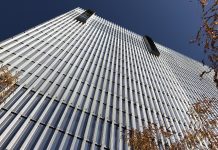
March 20 (UPI) — Efforts to restore cleared forests in the Amazon are sometimes undermined by climate change and human activity, according to a new study.
The research, published Friday in the journal Nature Communications, showed forest plots that have been frequently or recently disturbed by fire and human activity are slower to regenerate, stunting carbon uptake.
To curb climate change, many countries have promised to restore areas of forest previously cleared for logging or agriculture.
Secondary forest growth can absorb a lot more carbon than old growth forests, but not all secondary forest regeneration is created equal.
To better understand the factors that influence carbon uptake in recovering forests, scientists in Brazil and Britain used satellites to track changes in tree coverage and carbon uptake in a variety of secondary forests in the Amazon.
When scientists analyzed the relationship between forest regeneration and a variety of environmental factors and human activities, they found recent fires and repeated episodes of deforestation reduced regrowth rates between 20 and 55 percent.
“The regrowth models we developed in this study will be useful for scientists, forest managers and policy makers, highlighting the regions that have the greatest regrowth potential,” lead study author Viola Heinrich, a doctoral student at the University of Bristol, said in a press release.
Scientists calculated the amount secondary forest regrowth can contribute to Brazil’s net emissions reduction targets — part of the country’s Paris Agreement pledge.
The data showed that if only secondary forests older than 20 years are preserved — forests more likely to have been repeatedly disturbed — secondary forest regrowth will be able to account for just 1 percent of the country’s net emissions reductions target.
If Brazil protects a wider diversity of secondary forest plots — the nearly 30 million acres Brazil promised to restore and reforest in 2015 — secondary forest regrowth will be able to account for 6 percent of Paris Agreement target.
“Across the tropics several areas could be used to regrow forests to remove CO2 from the atmosphere,” said study co-author Luiz Aragão, a researcher at the National Institute of Space Research in Brazil.
“Brazil is likely to be the tropical country with the largest potential for this kind of nature-based solution, which can generate income to landowners, reestablish ecosystems services and place the country again as a global leader in the fight against climate change,” Aragão said.
Unfortunately, Brazil has backed down from its 2015 pledge, shrinking the amount of secondary forest to be restored.
“The findings in our study highlight the carbon benefits of forest regrowth and the negative impact of human action if these forests are not protected,” said co-author Jo House, researcher at the University of Bristol.
“In the run up to the 26th Conference of the Parties, this is a time when countries should be raising their climate ambitions for protecting and restoring forest ecosystems, not lowering them as Brazil seems to have done,” House said.





